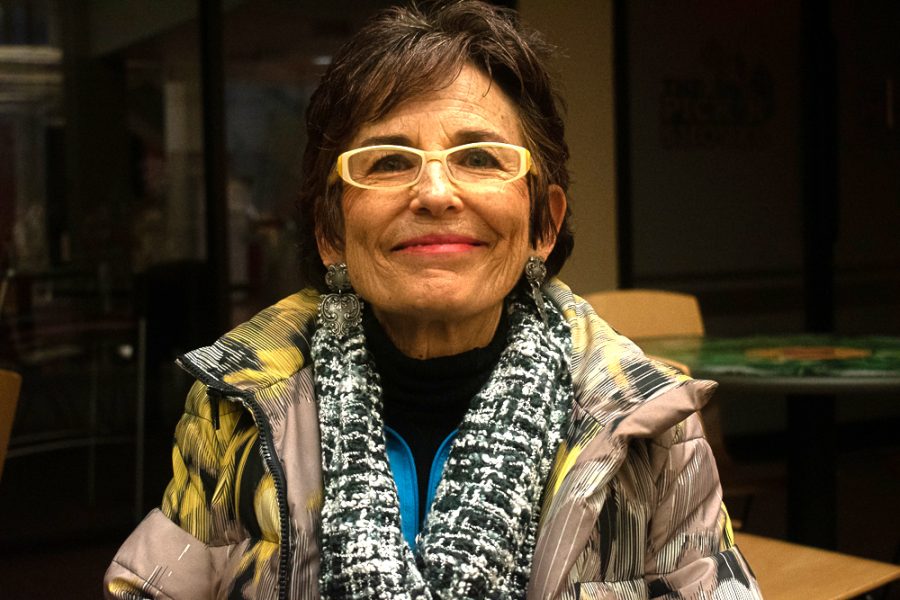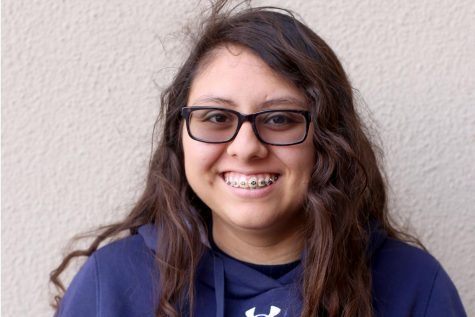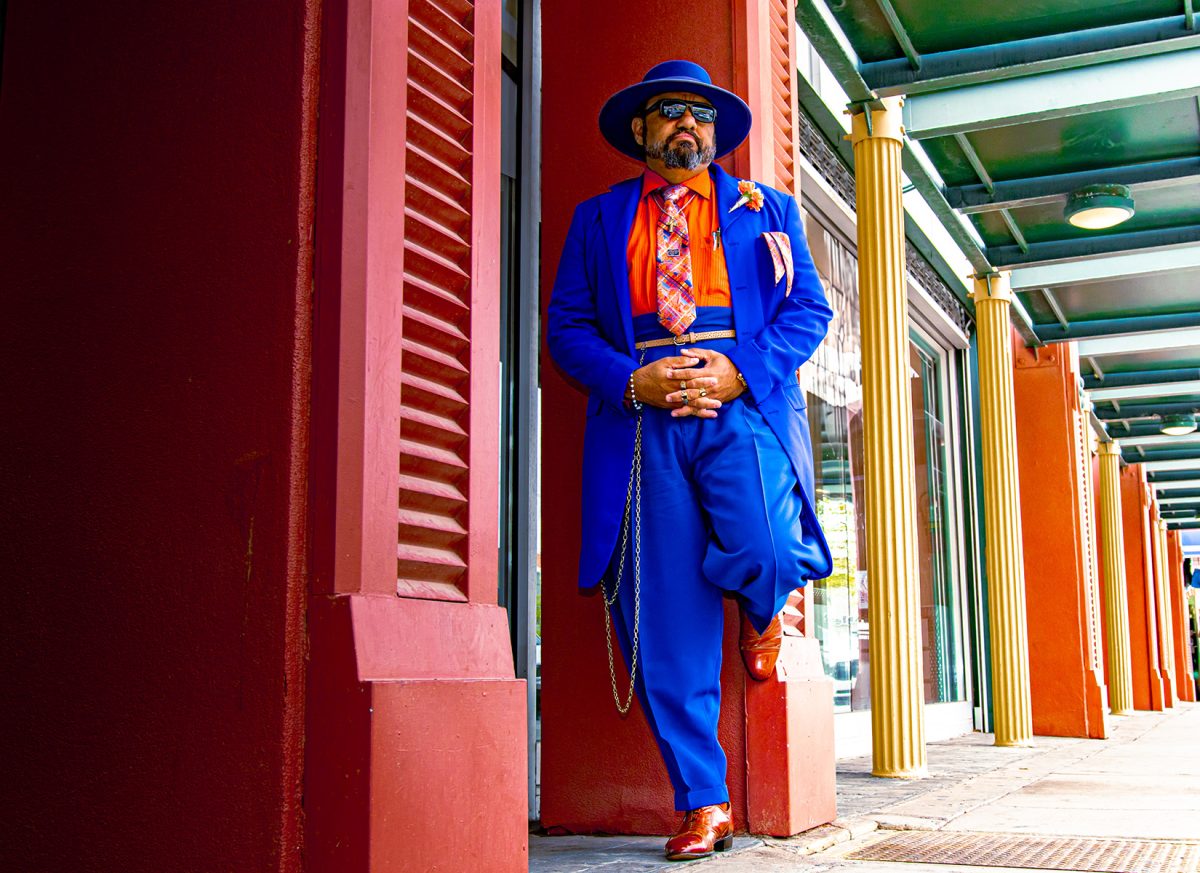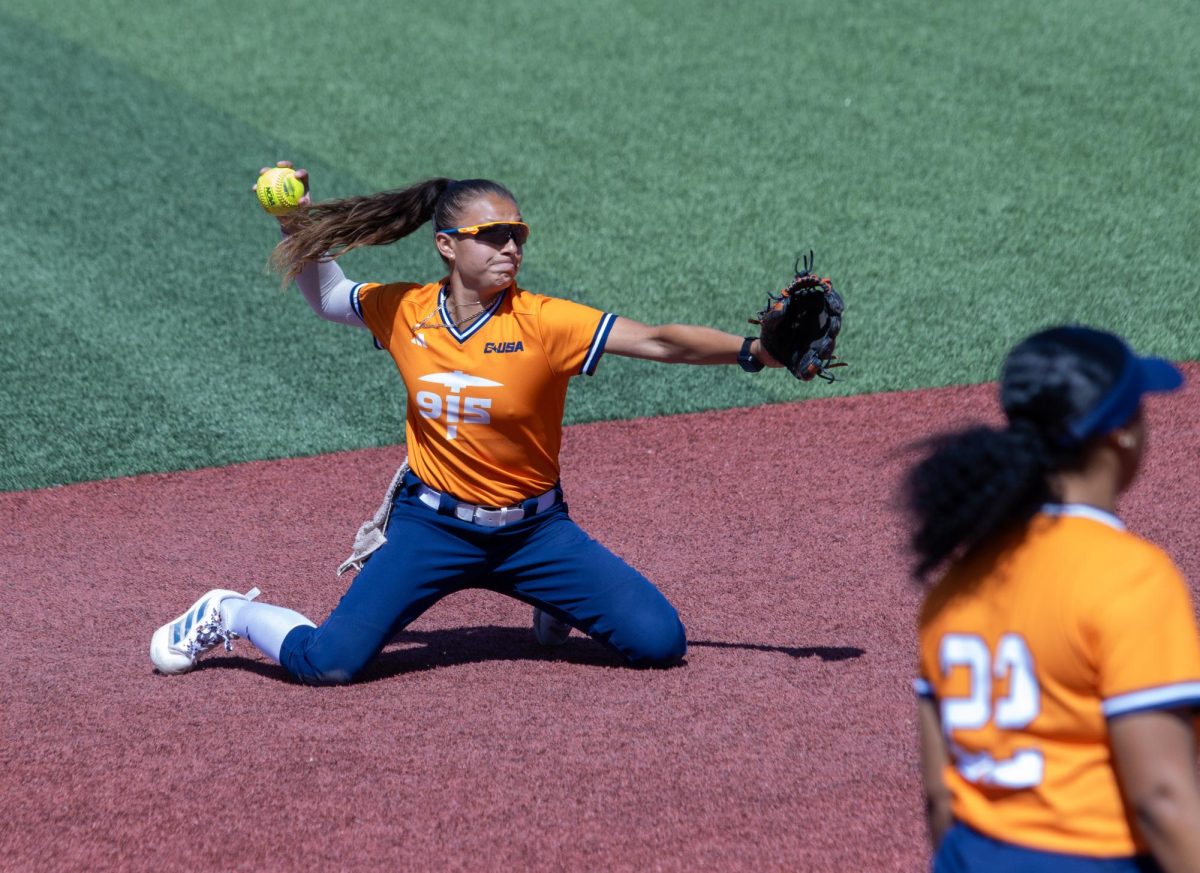When she was 19 years old, Carmen Navar entered art school wishing to become an artist, but it ultimately was a dream she did not achieve until 52 years later.
Navar describes her younger self as a spoiled girl who skipped class despite her desire to be an artist. She said back then she had a narrow definition of art.
“I had never developed the discipline of drawing, but I was raised in a very, very creative home, not appreciating that as art. It was like, we cook, we sew, we make all these cakes, we do all this creativity, but it’s not art,” Navar said. “I just thought that art was drawing and painting. That’s it. Since I was not skilled in drawing, I didn’t think I was an artist.”
Growing up in the El Paso’s Lower Valley, Navar was the eldest of eight children. Her father’s family came to El Paso running away from Pancho Villa, where they united with her mother’s family. Both were dairy families.
“I like to say (I grew up) amongst the rattlesnakes and the cows,” Navar said.
Her mother never taught art to her children, but she gave them crayons and coloring books.
“We were given tons of coloring books. Thank God my mother kept us busy with coloring books,” Navar said. “I’m extremely grateful to Crayola. It’s interesting that I’m a mixed media artist and I use crayons in my work. I use wax in my work.”
However, at 19, she didn’t believe she could manage college.
“I was immature,” she said. “I had no idea the great opportunity I had in my hands. Life took over.”
Navar said she married at 19 years old to a man who taught her everything that she needed to change herself. The marriage lasted 22 years and they had three children before the divorce.
“It was very hard to let go because I thought that’s what my role was,” Navar said. “My role, really, is to be myself, and I discovered that through the arts. The arts have saved my sanity.”
After the divorce, Navar slowly began to value herself more.
She began attending the Southwest Institute of Merchandising and Design and later graduated as valedictorian for her sewing skills. She used those skills to earn some money. However, she still did not see herself as an artist.
“I started using my sewing skills … and making clothing and then I would put all kinds of buttons and throw paint on it,” she said. “I was an abstract artist from the very beginning, not thinking that I was a real artist because I thought I did not know how to draw, but all along I could — I did — I just needed to awaken the skill.”
Eventually, stress and food allergies sickened her. Navar turned to alternative medicine, which eventually led her to meet other artists who believed in her.
“I crossed over into alternative medicine and started searching and, lo and behold, I took one of my projects to a curator and she said, ‘Carmen, go do more.’ I said, ‘You think this is art?’ She said, ‘Go do more.’ That’s how I teach today. Go do more,” Navar said. “The path is beginning to open. The path is beginning to clear up. I did not know anything about the journey. I didn’t know anything about anything other than it’s what I wanted to do, but I did not think I could do it.”
It was then, with Hal Marcus telling her that she might become an artist, that Navar decided to go back to school formally, after being in and out over the years. She had a total of 113 credits and only needed 32 to graduate. She entered multidisciplinary studies as a junior and took every drawing and art history class she could in order to understand the 21st century artist.
At UTEP, Navar received support from Terri Bauer, departmental advisor and senior lecturer in the university’s art department.
“Art is used to heal; art is used to create beauty; art is used to restore. The arts are the healing of the emotion, of humanity, because that’s what they did for me,” Navar said. “Then Terri Bauer, who was extremely instrumental in my training, kept asking me, ‘Carmen, what are you interested in?’ I had no clue, but she listened to me. I would talk and talk and talk … She helped me through my father’s death and my mother’s death and she would listen to me and she would say, ‘Carmen just draw from that place, just draw from that place.”
Not only did Navar have to deal with her grief, but she also had to deal with skin cancer, specifically melanoma, basal cell and squamous cell cancer, for 10 years.
“It’s been 10 years battling them one after the other after the other,” she said. “But now, we’re clear.”
Navar had surgery for her squamous cell cancer last year and is now in remission.
However, her parents’ deaths and cancer weren’t the ones that stopped her from coming to school altogether.
Last semester, during a vacation in California for a car show, Navar tripped on the sidewalk and broke her arm. Because of this, she had to postpone her education for another semester.
When Navar returned to school, she was able to take a special topics class with Thomas Birkner that dealt with abstract art, along with a graphic design class that helped her with her computer skills.
“How could I have known that that there was going to be an abstract special topics class this semester? If I hadn’t broken the arm, I wouldn’t be doing the abstract art … or (have been) able to practice with such great painters.”
Not only did she have the chance to take Birkner’s class, but she also found out she had vertigo and needed to keep herself more hydrated because that condition had to do with a lack of potassium.
In 2014, Navar graduated with a bachelor of arts, but she still needed three credits to get the bachelor of fine arts and she wanted to fulfill her own promise of completing what she didn’t when she was 19.
“That’s why it’s important, psychically and emotionally, that I did something to complete for me,” Navar said. “It’s like … going into another chapter in my life.”
Now, at a youthful 71 years old, after 23 years of marriage to Richard, she is finally getting her degree and is plans to build her portfolio, part of which was showcased in the LatinArte exposition earlier this year.
“(This) story is to inspire people, especially older women, who don’t believe in themselves and have a dream,” Navar said. “Dreams have to be watered because dreams are like seeds. If the seed is not watered, it’s not going to grow. They have to put themselves in an environment where they can grow. I put myself in an environment where I was nurtured and supported.”
Alexia X. Nava Carmona may be reached at [email protected]












